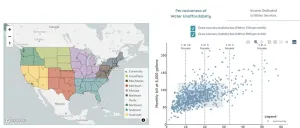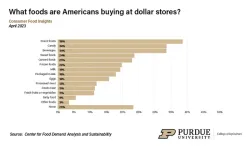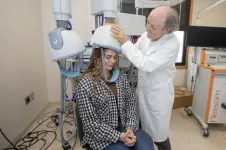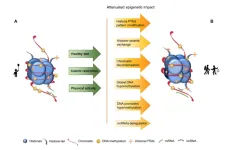(Press-News.org) A new analysis suggests that about one in seven households across the U.S. may face financial hardship in paying for access to water and wastewater services. Lauren Patterson and colleagues at Duke University, North Carolina, present these findings in the open-access journal PLOS Water.
U.S. households pay utilities for access to water for drinking, cooking, cleaning, and sanitation, as well as for wastewater services. However, in recent years, the cost of these services has increased alongside a widening income gap, fueling affordability concerns. Addressing these concerns requires a clear understanding of water affordability challenges across the U.S.
To help clarify, Patterson and colleagues analyzed the affordability of water services for households served by 787 of the largest water utilities in the nation. They assessed the number of households spending more than 4.6 percent of their monthly income—about one workday’s worth of pay—on 6,000 gallons of water per month, which is considered sufficient to meet basic household needs.
The researchers found that a total of 17 percent of all households in the study—covering about 28.3 million people—spent more than 4.6 percent of their income on water services. A median of 15 percent of households, or one in seven, faced this level of water unaffordability.
Households that might struggle to afford water services were located across all states and regions of the U.S., even when considering particularly conservative definitions of affordability. This study focused on larger water systems and did not consider smaller water systems serving communities of fewer than 1,000 people, which have higher costs, suggesting that even more households might struggle to afford basic water services than captured in the analysis.
The researchers also note that the drivers of water unaffordability are varied and complex, including factors such as aging infrastructure, climate change, and low household incomes. They suggest that solutions to boost affordability may therefore require comprehensive strategies at the local, state, and federal scales.
To aid such efforts and empower the public, the researchers developed an interactive online tool that shows how water affordability changes depending on location, usage rates, and definition of affordability.
The authors summarize: “An analysis including nearly half the U.S. population estimated 17 percent of households may struggle to afford their drinking water and sanitation services.”
#####
In your coverage please use this URL to provide access to the freely available article in PLOS Water: https://journals.plos.org/water/article?id=10.1371/journal.pwat.0000123
Citation: Patterson LA, Bryson SA, Doyle MW (2023) Affordability of household water services across the United States. PLOS Water 2(5): e0000123. https://doi.org/10.1371/journal.pwat.0000123
Author Countries: USA
Funding: This work was funded by Sprint Point Partners (https://thespringpoint.com/) through their Delta Water Innovators program. MWD. The funders had no role in the study design, data collection and analysis, decision to publish, or preparation of the manuscript. No authors received a salary from the funders.
END
Millions of U.S. households may struggle to afford basic water services
2023-05-10
ELSE PRESS RELEASES FROM THIS DATE:
Data from Argonne’s Advanced Photon Source provides foundation for first US approved RSV vaccine
2023-05-10
Respiratory syncytial virus (RSV) is a highly contagious disease that affects millions of people each year around the world, resulting in an estimated 160,000 deaths. In the United States, severe RSV causes 6,000 to 10,000 deaths among people 65 years of age or older.
On May 3, the U.S. Food and Drug Administration approved Arexvy, an RSV vaccine developed by pharmaceutical company GSK plc, formerly GlaxoSmithKline plc. It is the first RSV vaccine to be approved in the United States, and according to GSK’s press release, the first for older adults to be approved anywhere in the world. This is a ...
New procedure allows micro-printing inside existing materials with greater accuracy
2023-05-10
3D printers form objects by layering melted plastic or metal, but this only works on large scales. What you need to fabricate microdevices for which the layering step is not feasible? What if it were possible to print directly into the bulk of an existing three-dimensional material?
The research groups of Lynford Goddard and Paul Braun, professors at the University of Illinois Urbana-Champaign, have been collaborating to develop such a process. They use the technique of multiphoton lithography to print inside an existing ...
Purdue April Consumer Food Insights report explores role of dollar stores in food landscape
2023-05-10
Purdue April Consumer Food Insights report explores role of dollar stores in food landscape
A market for an expanded grocery selection at dollar stores potentially exists, especially with consumers who live less than 10 minutes away, according to data reported in the April Consumer Food Insights report.
The survey-based report out of Purdue University’s Center for Food Demand Analysis and Sustainability assesses food spending, consumer satisfaction and values, support of agricultural and food policies, and trust in information sources. Purdue experts conducted and evaluated ...
Using reflections to see the world from new points of view
2023-05-10
As a car travels along a narrow city street, reflections off the glossy paint or side mirrors of parked vehicles can help the driver glimpse things that would otherwise be hidden from view, like a child playing on the sidewalk behind the parked cars.
Drawing on this idea, researchers from MIT and Rice University have created a computer vision technique that leverages reflections to image the world. Their method uses reflections to turn glossy objects into “cameras,” enabling a user to see the world as if they were looking through the “lenses” of everyday objects like a ceramic coffee mug or a metallic ...
Stimulating hope: Personalizing treatment options for depression
2023-05-10
Artificial intelligence. Gene editing. mRNA vaccines. It’s safe to say the past few decades have felt like the next big wave of medicine. However, what continues to be needed in virtually every field is a personalized approach to care.
That’s certainly needed when it comes to using transcranial magnetic stimulation (TMS) to treat depression, said Medical University of South Carolina Distinguished University Professor Mark George, M.D.
TMS uses a magnet to increase brain activity in ...
Gene p16 drives colorectal cancer emerging as a target for potential therapies
2023-05-10
Colorectal cancer is the fourth most common and second deadliest cancer. How colorectal cancer develops is not well understood, but a team led by researchers at Baylor College of Medicine reports in the Journal of Experimental & Clinical Cancer Research that silencing the gene p16, even though the DNA itself does not change, can drive colorectal cancer progression in animal models. The researchers also revealed a strategy that reduced tumor growth and improved survival in tumor-bearing mice, opening new possibilities for future targeted therapies in patients with gene p16 alterations.
“Years of research have shown ...
New database offers insight into consequences of language loss
2023-05-10
New database offers insight into consequences of language loss
Languages, like animal species, can go extinct. More than half of the world’s approximately 7,000 signed and spoken languages are currently endangered. And without intervention they are likely to become extinct, meaning nobody will speak or sign them any longer.
While language loss is happening across the world, the costs vary strikingly in different places, according to a new study co-authored by Yale linguist Claire Bowern. Regions where all Indigenous language are endangered — including parts of South America and the United States — ...
Bigger isn’t always better: Size of research teams does not equate to better research outcomes, finds new study
2023-05-10
Having a large research team isn’t linked to producing higher quality research, finds a new study from the University of Surrey which analysed data from 1.4 million academic papers.
Professor Sorin Krammer, lead author of the study and Professor of Strategy and International Business at the University of Surrey, said:
“Despite the prevalence of large teams in research, there is still a lack of a good understanding of how their size and diversity affects their performance.”
“Our ...
The acute problem of chronic disease
2023-05-10
In medicine and science, the term “pathogenesis” describes the origin and development of disease. There is not, however, a broadly accepted term to describe the other half of the equation: the process of healing and recovery.
In a new and far-reaching paper, published May 10, 2023 in the journal Mitochondrion, Robert K. Naviaux, MD, PhD, professor of Medicine, Pediatrics and Pathology at UC San Diego School of Medicine, proposes both a term and, more importantly, outlines the array of processes and players, beginning with cellular mitochondria, that drive the healing process – and whose dysfunction underlies chronic illnesses from diabetes ...
An epigenetic approach to modulating aging with nutrition and exercise
2023-05-10
“In this review, we describe how aging impacts epigenetics and how nutrition and physical exercise can positively impact the aging process, from an epigenetic point of view.”
BUFFALO, NY- May 10, 2023 – A new review paper was published in Aging (listed by MEDLINE/PubMed as "Aging (Albany NY)" and "Aging-US" by Web of Science) Volume 15, Issue 8, entitled, “How can we modulate aging through nutrition and physical exercise? An epigenetic approach.”
The World Health Organization predicts that by 2050, 2.1 billion people worldwide ...







